World
Oysters as large as cheese plates: How New Yorkers are reclaiming their harbour’s heritage
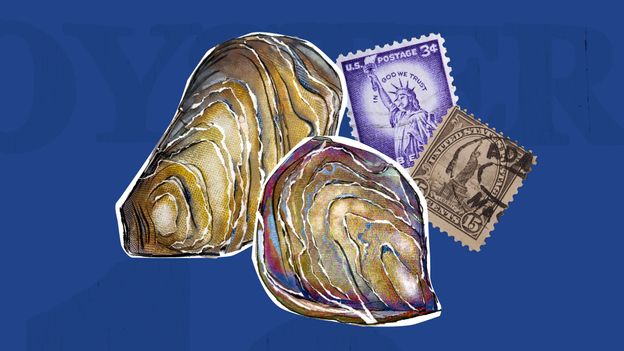
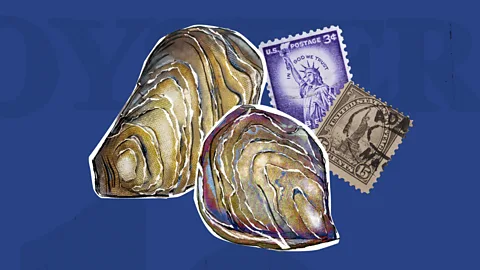 Serenity Strull/ BBC
Serenity Strull/ BBCOver the course of 10 years, the Billion Oyster Project, one of New York’s most ambitious rewilding initiatives, has planted 150 million larvae in its harbour. Did it work?
The eastern oyster has lived in the Hudson River estuary for at least 6,000 years. With 350 sq miles (900 sq km) of oyster reef, some biologists estimate that the New York harbour used to contain half of the world’s oyster population.
Historically, oysters were deeply woven into the life of East Coast cities, as Charles Dickens described enthusiastically in his travelogue American Notes. On the difference between dinners in London and Boston, for instance, he notes that Americans would serve “at every supper, at least two mighty bowls of hot stewed oysters, in any one of which a half-grown Duke of Clarence might be smothered easily”.
In New York, Dickens describes cellars serving “oysters, pretty nigh as large as cheese-plates”. “Dutch reports of foot-long oysters were only slightly exaggerated”, confirms Matt Kurlansky in his 2007 bestseller The Big Oyster, a term he coined to signify how important the bivalve was not only to the culinary life of the city, but also its businesses and even its buildings. Kurlansky writes that Trinity Church in Lower Manhattan was built with oyster shell mortar, and the nearby Pearl Street, originally on the waterfront, got its name from a ‘midden’, a mountain of discarded shells that was apparently located in its vicinity.
That thriving population of oysters is long gone. But over the past 10 years, one of New York’s most ambitious rewilding projects has sought to revive its once-famous oysters, adding 150 million larvae across 20 acres of harbour since its beginnings. The goal: restoring the city’s coastal habitat, improving water quality and educating the public. Ten years on, there are still many more oysters to go until they reach their headline billion. But for those added to the harbour so far, how well did it work? And why was such a project needed in the first place?
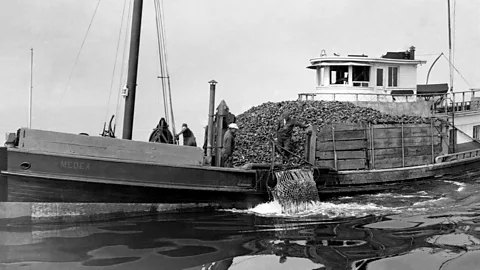 Getty Images
Getty ImagesThe last of New York’s oyster beds, in Raritan Bay, shut down in 1927. Kurlansky collected newspapers from the time – decades of articles denouncing the poisoning of the harbour and the outrage of New Yorkers, who used to have their favourite oyster beds, much like people today favour certain grapes for their wine. None of these outcries prompted any change. “A student once asked me if it was just like climate change,” Kurlansky tells me, noting how struck he was by the child’s perceptiveness.
But the oysters weren’t gone forever. In 1972, with the Clean Water Act, the city started taking better care of its rivers, prohibiting the dumping of waste and raw sewage into the harbour.The act provided a legal framework to regulate pollution in the country, and although on its 50th anniversary in 2022, the White House said that “we still face serious threats to clean water”, the act overall improved water quality in rivers poisoned by the industrial revolution.
“The conversation really changed when we experienced the impacts from Hurricane Sandy,” says Carrie Roble, an aquatic ecologist and vice president of estuarine education at Hudson River Park. “Our city began to ask, what’s next, how do we protect our communities?”
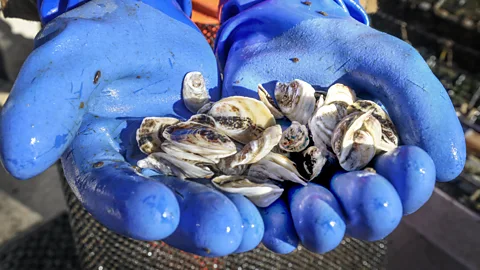 Getty Images
Getty ImagesSome experts were already working on it. In 2003, Murray Fisher founded the Harbour Public High School on Governors Island, which relates every aspect of its curriculum to water. Murray, who grew up on a farm, invited Pete Malinowski, who was born on an oyster farm, to teach there.
“I was never a super successful student,” says Malinowski. “But as any good farmer, I had all this complex biological understanding [of marine life]. So, the idea of using farming as a teaching tool was really exciting to me.”
Malinowski started an experiment with few students and a 30-gallon (110-litre) plastic bin in an empty basement room of Fort Jay on Governors Island. They filled the bucket with harbour water to see if oysters could grow and survive despite the pollution, and planted about 30,000 larvae, which in oyster terms is not a very large quantity, and in human terms is less than a teaspoon.
From there, Malinowski and his students scaled it up and built a small aquaculture system growing a couple of million oysters on one of the piers. What started as a student project grew into a city-wide initiative, today partnering with several institutions, one hundred schools, and 75 restaurants that now recycle oyster shells through the Billion Oyster Project.
A study over six years at one of Malinowski’s sites, on the Tappan Zee area, a natural widening in the Hudson river about 20 miles north of Midtown Manhattan, found that oysters were living and growing both in the gabions (metal cages filled with empty shells) as well as in the reef balls that were deployed over 2.4 hectares (6 acres) of seafloor, and that “both substrate types were heavily colonised by oysters and several other species at all three sites”.
“Some years can be more [environmentally] stressful than others, but the survival rate is pretty good,” says Matt Hare, an associate professor in natural resources and the environment at Cornell University, and visiting scholar at the park. “I’ve been monitoring them since 2018, and this year we saw more [oyster] babies than we’ve ever seen before.”
The problem though, is that counting wild oysters is extremely challenging. Oysters send sperm and eggs out in water, where fertilisation happens, and larvae subsequently slosh around for two weeks, snacking on microalgae, until they get fat enough to glue themselves to a hard surface, and turn into juvenile oysters, also called “spat”.
Because of the two weeks of floating around, it’s hard to tell where spats came from. Are they the offspring of a successful rewilding project, or were they washed downstream from richer breeding grounds because of currents and weather patterns? Genetics could help answer this question and Hare says he is working on it. “I am very anxious to get the lab work done,” he says. “And find out how much of that came from the restoration oysters.”
Counting challenges aside, the project recently attracted some international attention. In September 2024, during Climate Week, the Mayor of London Sadiq Kahn took a ride on a small motorboat up the Hudson River and all around the tip of Manhattan to go see two oyster gabions in Brooklyn. He caught a couple of small crabs with his bare hands, threw them back in the water, posed for few photo opportunities by the Statue of Liberty and explored the possibility of bringing the oysters back to the Thames as well.
Ambitious oyster restoration projects in Bangladesh, Australia, Hong Kong and elsewhere are already underway, each on varying scales and with different priorities, be they slowing coastal erosion, protecting against storm surges or improving water quality.
“The goal is not to recreate what was here before the colonists, when it was wall-to-wall oysters,” says Hare. “In my perspective, the goal is to bring back a functional oyster population that is self-sufficient. So that they are reseeding themselves, and we’re not having to use hatchery oysters or hatcheries at all to keep repopulating them.”
The main challenges for oysters are siltation – a kind of water pollution involving suspended silt particles, a result of coastal erosion – and fertilisers. Oysters don’t like silt because it covers the hard bottom of the bay that the spat need to attach themselves to and grow. At the same time, fertilisers increase algae blooms and reduce oxygen rates .
“The ecological success of the project is seeing more oysters in more places every year,” says Malinowski. “And we know that that’s happening. The challenge: there still needs to be more, they’re not popping up at a density that is adequate for the population to grow.”
Since the eggs are fertilised in the water, density is key to reproduction. “In most places you get one to five, maybe even 10 new animals [in on one square metre of New York harbour] every year. What you really need is 100 or 200. And so, the population is going up, but it’s not quite at a point where there’s enough larvae in the system. And that’s why we’re putting millions and millions of oysters in the water.”
Oysters’ filtration capacity can help the whole ecosystem, and Roble says that gabions provide home for “encrusting species like sea grapes, slipper snails, and sponges, plus smaller crustaceans including grass shrimp and mud crabs”. When he pulls up the gabions, Malinowski sometimes finds seahorses, who originally wrapped their little tails around eelgrass, and now are anchoring themselves to the metal frame. Moreover, Hare is fascinated by oysters’ evolutionary potential. Every season, a female oyster can send 50 to 100 million eggs into the water.
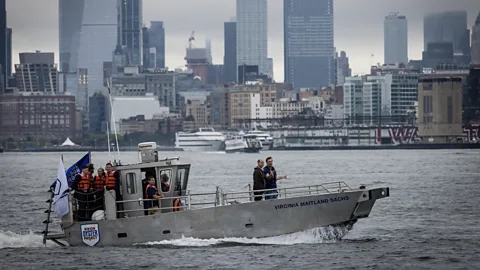 Getty Images
Getty Images“When you have that level of fecundity and mortality every generation, natural selection has an opportunity to be very strong in every generation,” says Hare. “And yet this is a species that has been around looking the same for many tens of millions of years. They’re not the poster child for fast evolution in visible terms: Things getting bigger or smaller or longer or shorter. But my studies have been more about what is the possibility of oysters evolving to help them deal with changes we expect from climate change.”
It’s perhaps not the kind of research that Malinowski saw coming out of his 30-gallon bucket 10 years ago. Today, he says that the main accomplishment of his project, even more than increasing oyster population, is reminding New Yorkers that they are islanders.
Born on the starkly beautiful Fishers Island in the New York archipelago, Malinowski says that coming down to the water’s edge, pulling up an oyster cage, holding a crab in a hand, or finding a seahorse, is an experience that can have a life-changing impact on young people, and shift the way they see their city and the planet.
“Ultimately,” says Malinowski, “it’s hard to care about something that is only abstract, something you don’t have experience with. Ultimately, people have a much greater ability to improve water quality than the oysters ever will.”











